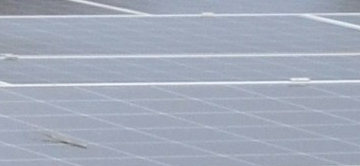How do you ensure that an economy is still running under critical weather conditions? The polar episode that recently hit Texas provides us with some answers on the economic and political dimensions of the question.
Blowing hot and cold
The polar vortex that refrigerated Texas in mid-February broke the monotony of daily covid-19 statistics. A detailed analysis of the circumstances and responsibilities of the power system failure in one of the major U.S. states has already begun in the media. It shows the buck being passed from the hands of politicians into the hands of system operators, the thermal generation units pointing out the fragility of the wind turbines, and the latter throwing the buck back to them because of the freezing of the gas infrastructure. We will have to wait a little longer to better assign the responsibilities with serenity. But we can already wonder about the degree of tolerance of the populations in the face of extreme events, climatic or not.
Texas made the headlines because of the apparent fragility of its electrical system. Yet it is relatively diversified: about half of the production comes from natural gas, a quarter from coal, 10% from nuclear power, 12% from wind power and the rest from photovoltaics. It's true that from an environmental point of view it's not glorious, but environmental protection was not the primary concern of Texans between February 13 and 17, 2021. The system, which is calibrated to get through summer peak periods, proved to be inadequate to meet demand during exceptional winter events. For 2021, the operator of the electrical system (Ercot) that supplies 90% of Texan consumers expected a reserve margin (difference between available power and peak demand) of around 10%, enough to spend the summer serenely when the air conditioners are operating at full capacity to combat the 40 degrees Celsius outside. But the winter storm Uri changed things for a few days. The drop in temperatures led to a sharp increase in demand for heating at the same time as production collapsed due to snow and ice. Load shedding had to be organized and ran for almost three days, cutting the power supply to millions of households, but also cutting off water and natural gas supplies in many places. In the wholesale electricity market, the price reached its regulatory cap of $9,000/MWh, putting a strain on the budgets of consumers who had signed contracts indexed to wholesale market prices, and putting the accounts of energy short operators and holders of firm delivery contracts in the red.
A similar but less serious episode occurred on February 3, 2011. On the strength of this experience, manufacturers should have invested in equipment to de-ice the blades of wind turbines and heat the gas pipelines that supply gas-fired power plants and boiler rooms, complain the victims. Nevertheless, this precautionary investment has its limits because the cost of a guaranteed energy supply in 99.9% of the hours of the year (about 5 hours) is already very high and going to 100% is impossible. Accepting the risk of a major accident occurring once every ten years rather than once every twenty years presents financial gains and costs. It is an economic calculation that is feasible but one that policy makers generally prefer not to consider. The covid 19 pandemic episodes perfectly illustrates this point.
Security of supply and market
What about private initiative? Texas has gone very far in liberalizing electricity production, relying on competition between operators and their remuneration exclusively based on the energy sold to encourage them to invest sufficiently in the security of production and transmission facilities. But in an industry where deliveries pass through a network on which the balance between injection and withdrawal must be maintained at all times, investments to improve security of supply generate positive externalities between producers. When a producer or a retailor makes security investments on its facilities, it bears the full costs while the benefits are shared with its competitors and partners since they reduce the risk of a damaging blackout for all the agents connected to the network. We are faced with a free-rider problem where all operators are waiting for their competitors or partners to invest. This market failure must be fixed by public authorities, by imposing regulatory constraints or by rewarding generation capacity on top of energy. This brings us back to the political dimension of the problem.
An electric island
Texas' electrical system has been organized so that it does not depend on federal regulations. A good summary of this policy of mistrust of Washington is given by former state governor Rick Perry, for whom "Texans would be without electricity for longer than three days to keep the federal government out of their business”.. To do this, most of the Texan territory whose electricity system is managed by Ercot has no interconnection with neighboring U.S. states. The downside of this situation is that it is impossible to ask for help from other systems that, in any case, had their own power supply problems during storm Uri. The advantage is that there is no need to look outside for those responsible.
Today, it is the Ercot board that is in the eye of the storm. Forgetting that they have defined the regulatory framework within which their electrical system is operated, Texas policymakers find in the system manager the ideal scapegoat, especially since four of the board's members live outside the state. To date, seven members have resigned, some after death threats. It is difficult to know Ercot's line of defense because access to its website is padlocked: attempts to connect are denied "Access denied. Error 16". The House of Representatives and the Senate of Texas (both Republican-majority assemblies) began hearings on February 25. It will therefore be necessary to wait to find out which of the governor, the sector regulator, the market operator or the energy producers and distributors will be pilloried, waiting for the next storm.
*
* *
Ercot will probably defend itself by arguing that its load shedding avoided the complete collapse of the power grid since the frequency fell below 59.4Hz (instead of the nominal setting of 60Hz) for more than 4 minutes. Compared to the avoided catastrophe, rolling black outs is a lesser evil. But the blow came very close and the seriousness of the episode should lead Texas politicians, and their armed wing the Public Utilities Commission (PUC), to impose on Ercot to tighten its safety instructions, especially since an increase in extreme episodes frequency is expected due to global warming.





